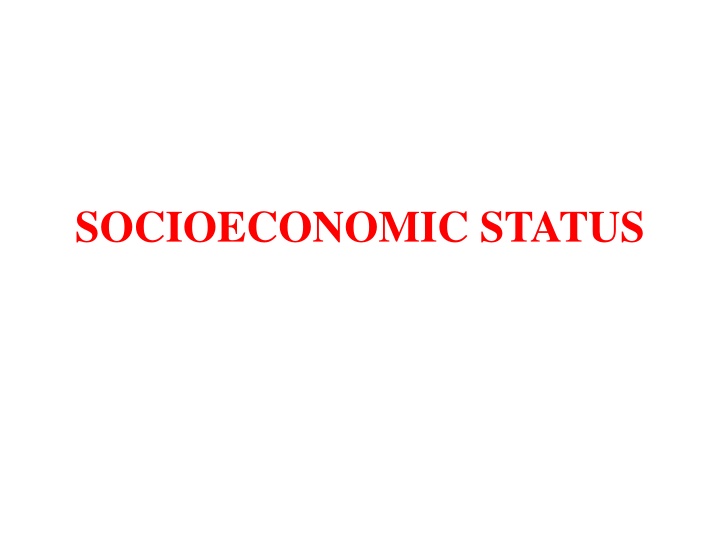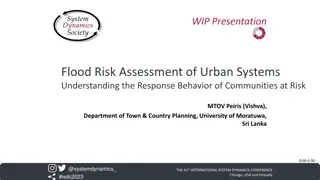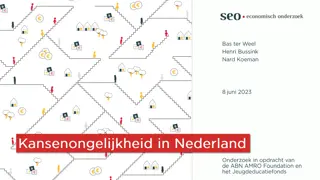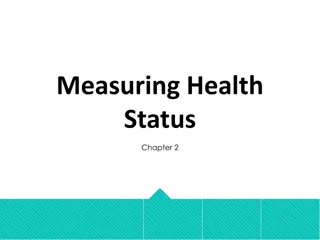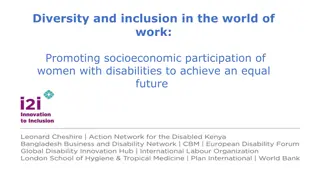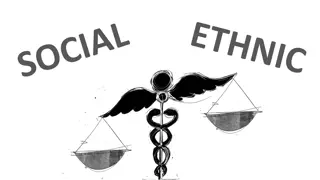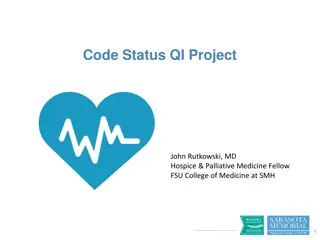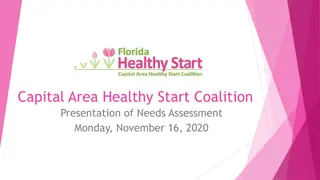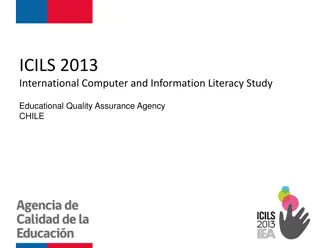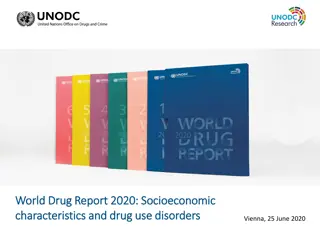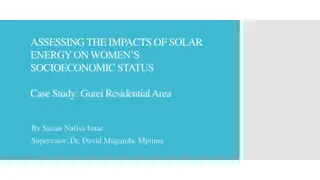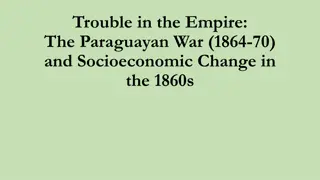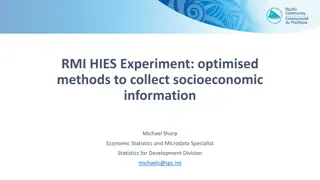Socioeconomic Status and Assessment Methods
Learn about the key factors determining socioeconomic status, methods for assessing SES, and classifications such as BG Prasad and Kuppuswamy methods.
Download Presentation

Please find below an Image/Link to download the presentation.
The content on the website is provided AS IS for your information and personal use only. It may not be sold, licensed, or shared on other websites without obtaining consent from the author.If you encounter any issues during the download, it is possible that the publisher has removed the file from their server.
You are allowed to download the files provided on this website for personal or commercial use, subject to the condition that they are used lawfully. All files are the property of their respective owners.
The content on the website is provided AS IS for your information and personal use only. It may not be sold, licensed, or shared on other websites without obtaining consent from the author.
E N D
Presentation Transcript
INTRODUCTION Three variables determines socioeconomic status of individual/ family. 1. Education 2. occupation 3. Income
CLASSIFICATION OF SOCIOECONOMIC STATUS METHODS OF ASSESSING S.E.STATUS 1. BG Prasad method 2. Kuppuswamy s method 3. Prateek method 4. Kulshrestra method
PRASADS METHOD BG Prasad (1961)- per capita family monthly income as an indicator and classified status into 5 group. Useful social classification of family not individual. Since value of rupee changes, update value of rupee applying appropriate correction factor (CF). CF- by multiplying AICPI by 4.93% as suggested by Kumar. Preferred for rural areas.
Modified BG Prasad Classification = BG Prasad X CF Per capita monthly income = Total monthly income of family Total members of family
B G Prasad classification of 1961 per capita monthly income X CF Modified B G Prasad Classification for 2015 July 2018 Rs 100 and above X62 Rs 6200 and above Rs12,700 and above I (upper high) Rs 99-50 X 62 Rs 6199-3100 Rs12,699-6350 II (high) Rs 49-30 X 62 Rs 2099-1860 Rs 6349-3810 III Upper middle) Rs 29-15 X 62 Rs 1859-930 Rs 3809-1905 IV Lower middle) Rs 14 and below Rs 929 and 1905 and below V (Poor) below
CF =AICPI (Rs 1250 in November 2015) multiplied by 0.0493 therefore CF during November 2015 was 62
KUPPUSWAMY METHOD Kuppuswami B (1962) for urban population based on 3 components. 1. Education of head of family 2. Occupation of head of family and 3. Total monthly income of family from all sources Weighted score is given for each characteristics and total score calculated. Score 3-29 and classify-high, middle and low SES
Education criteria not changed. Occupation revised by Ministry of Skill Development and Entrepreneurship. Value of rupee by monetary inflammation so update it linked by All India Consumer Price Index (AICPI). Increase calculated by multiplying original income group with current CPI prices with a multiplication factor 0.0735
S. No. 1 Division of occupation Sub division Legislators, senior officers and managers Legislators and senior officers Corporate managers General managers 2 professionals Physical, mathematical and engineering science professionals Life science and health professionals Teaching professionals Other professionals 3. Technicians and associate professionals Physical and engineering science associate professionals Life science and health associate professionals Teaching associate professionals Other associate professional Office clerks Customer service clerks Personal and protective service workers Models, sales persons and demonstrators Market oriented skilled agricultural and fishery workers Subsistence agricultural and fishery workers 4 Clerks 5 Service worker and shop and market sales workers Skilled agriculture and fishery workers 6
S. No. Division of occupation Sub division 7 Craft and related trade workers Extraction and building trade workers Metal machinery and related trade workers Precision and handicraft, printing and related trade workers, other craft and related trade workers Stationary plant and related operators Machine operators and assemblers Drivers and mobile-plant operators Sales and services elementary occupations Agricultural and fishery related laborers Laborers in mining, construction, manufacturing and transport New workers seeking employment Workers reporting occupations unidentifiable or inadequately described Workers not reporting any occupation 8. Plant and machine operators and assemblers 9 Elementary occupations 10 Workers not classified by occupations
S. No. Education of the head Score 1 Profession or honors 7 2 Graduate 6 3 Intermediate or diploma 5 4 High school certificate 4 5 Middle school certificate 3 6 Primary school certificate 2 7 Illiterate 1
S. No. Occupation of the head score 1 Legislators senior officers and managers 10 2 Professionals 9 3 Technicians and associate professional 8 4 Clerks 7 5 Skilled workers and shop and market sales workers 6 6 Skilled agricultural and fishery workers 5 7 Craft and related trade workers 4 8 Plant and machine operators and assemblers 3 9 Elementary occupation 2
S. No Monthly family income in Rs (1976) Updated monthly family income (2018) Score 1 2 3 4 5 6 7 12 10 6 4 3 2 1 2000 1000-1999 750-999 500-749 300-499 101-299 100 1,26,360 63,182-1,26,356 47,266-63,178 31,591-47,262 18,953-31,589 6327-18,419 6,323
S. No. 1 2 3 Score 26-29 16-25 11-15 Socioeconomic status Upper (I) Upper middle (II) Lower middle (III) Upper lower (IV) Lower (V) 4 5 5-10 <5 LIMITATIONS Consider total family income, does take into account family size Educational criteria need to revised CPI-IW, CPI-AL And CPI-RL do not encompass all segmants
PAREEK AND KULSHERTRA Caste, occupation of head of family, education of head of family, level of social participation of head of family, land holding, housing, farm power (owing animals like bullocks, camel, elephant, horse or even tractors etc.), material possessions and type of family. Each characteristics given score. Total score graded into five SES-upper, upper middle, lower-middle, upper-lower and lower classes
S. No. Component Weighted score Caste A Scheduled Caste 1 Lower caste 2 Artisan caste 3 Agriculture caste 4 Prestige caste 5 Dominant caste 6
S. No. B Component Occupation None Laborer Caste occupation Business Independent profession Cultivation Service Weighted score 0 1 2 3 4 5 6
S. No. C Component Education Illiterate Can read only Can read and write Primary Middle High school Graduate and above Weighted score 0 1 2 3 4 5 6
S. No. components Weighted score S. No. Component Weighted score D Land No land Less than 1 acre 1-5 acre 5-10 acre 10-15 acre 15-20 acre 20 and above 0 1 2 3 4 5 6
S. No. components Weighted score E Social participation None 0 Member of one organization (like panchayat member, Nambardar etc.) 1 Member of more than one organization 2 Office holderin such organization 3 Wider public leader 6 F Family members Up to 5 1 Above 5 2 G House No house 1 Katcha house 2 Mixed house 3 Pucca house 4 Mansion 6
H Farm power No drought (buffalo/cows) animal 1 1-2 drought animals 2 3-4 drought animals 3 5-6 drought animals or tractor 6 I Material possession Bullock cart 1 Cycle 1 Radio 1 Chairs 1 Improved agriculture equipment 2 None 0 Score 13-23 (upper lower) IV Score less than 13 (lower lower V
Socioeconomic class Total score Grading Score more than 43 (upper) I Score 33-42 (upper midle II Score 24-32 (lower middle) III
BELOW POVERTY LINE As a cut of f line of per capita monthly income, below which it is not possible to purchase food as to obtain minimum desirable limit of energy, 2400 kcal per person per day in rural areas and 2200 kcal in urban area, in monetary terms, these people fall below the socioeconomic class V accordingly to modified BG Prasad s classification (Rs.32/day in rural areas and Rs.42/day in urban areas. 29.5% of population in India is in BPL (report 2016), more in rural area than in urban area
HEALTH HAZARDS AND POVERTY COMMUNICABLE DISEASE-Water-borne diseases, food-borne diseases, respiratory diseases, sexually transmitted diseases (STIs) including HIV/AIDS. NON-COMMUNICABLE DISEASES- Malnutrition, anemia, vitamin and mineral deficiency diseases. SOCIAL PROBLEM-Prostitution, drug addiction, alcoholism, unmarried mothers, family disintegration, unemployment, under employment, predisposing for antisocial behaviors- beggary, violence, delinquency, terrorism, corruption, burglary, murder etc.
MENTAL PROBLEMS-Depression, loneliness, inferiority complex, suicidal tendencies etc. OTHERS- Scabies, dental caries, pediculosis etc. Social health and economic aspect are inextricably interlinked among poor people affecting progress of country.
BENEFITS TO BPL CARD HOLDERS JANANI SURAKSHA YOGNA (JSY)-For pregnant women aged 19 years and above up to 2 living child. NATIONAL MATERNITY BENEFIT SCHEME (NMBS)- To provide better diet for pregnant women. INSURANCE OF WOMEN WORKERS- Premium per member is Rs.200, 50% paid by social security fund. Benefits are Rs. 20,000 for natural death, Rs.50,000 for death/disability resulting from accident and Rs.25,000 for partial disability.
BHAGYALAKSHMI SCHEME- Rs. 10,000 deposit will be made for each of 1st two female children, which will be returned with interest after child attain 18 years of age. SOCIAL ASSISTANCE-Old pension scheme (Rs. 1,000/month, family benefit scheme, widow pension scheme (widow should be 18 years old). PRASOOTI ARAIKE- Promote antenatal care by giving Rs. 1,000 at 6th month of pregnancy and other Rs. 1,000 at 9th month. UJJWALA- Providing LPG cyliders. AYUSHMAN BHARAT YOGNA-Insurance cover of Rs. 5 lakh/BPL family/year.
SOCIAL CLASS DIFERENCE IN HEALTH AND DISEASE FACOTORS INFLUENCE PEOPLE OF LOWER SOCIO-ECONOMIC CLASS 1. Size of family 2. Early marriage 3. Utilization of health services 4. Beliefs 5. Physical environment 6. Literacy and ignorance 7. Genetic endowment 8. Attitude to disease
SOCIAL CLASS AND HEALTH Income, occupation and education-positively correlated with health status. Individual in upper social classes have longer life expectancy, less mortality and better health and nutritional status. Social class differences family structure, utilization of medical and health services
POVERTY Poor are those who are below poverty line, whose daily consumption of food is less than 2400 kcals in rural area and 2100kcals in urban area. In India-300 million. Poverty impedes progress and undermines all factors of human life-housing, sanitation, getting health care services, dietary intake resulting in increased morbidity, mortality and high fertility. Opposite of poverty-obesity, hypertension, diabetes mellitus, heart diseases and cancers of prostrate, breast and uterus.
ILLITERACY AND IGNORANCE Illiteracy goes hand in hand with poverty. Illiteracy and ignorance-root cause of poverty in India-unhealthy lifestyle.
ROLE OF IGNORANCE IGNORANCE ABOUT Dinger of promiscuity Heat and electricity Poisonous mushrooms Treating wound with soil, dung etc. Vaccination after dog-bite Warning signals of cancer DISEASE CAUSATION STIs, HIV/AIDS Injuries and burn Food poisoning Tetanus Rabies Incurable cancer
